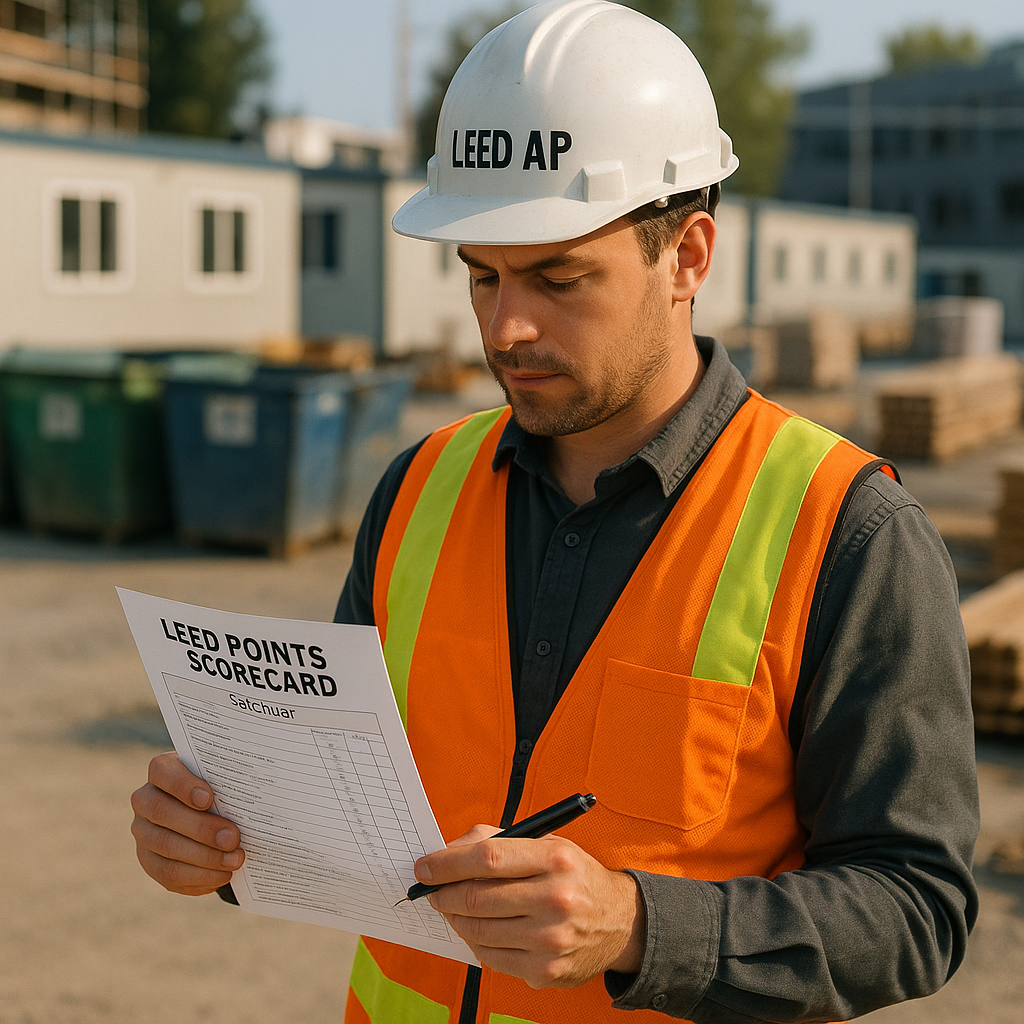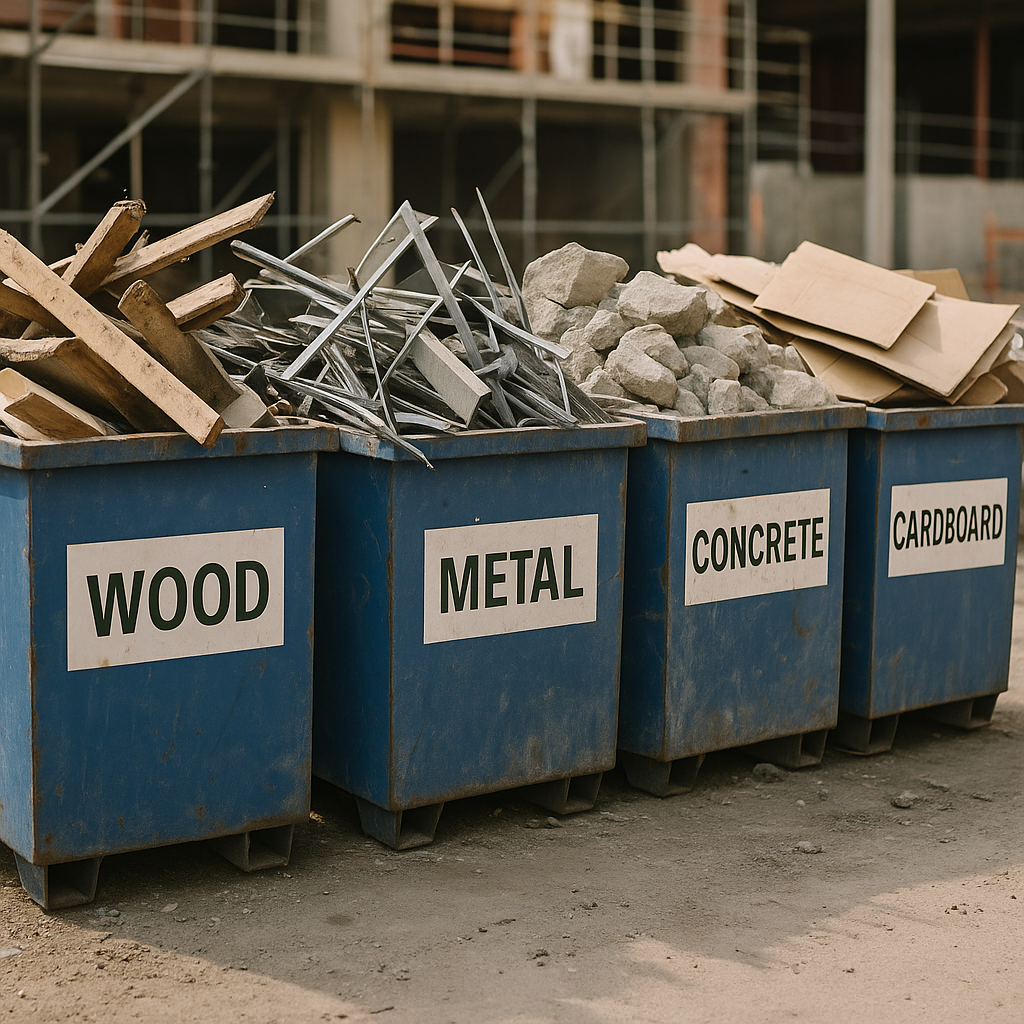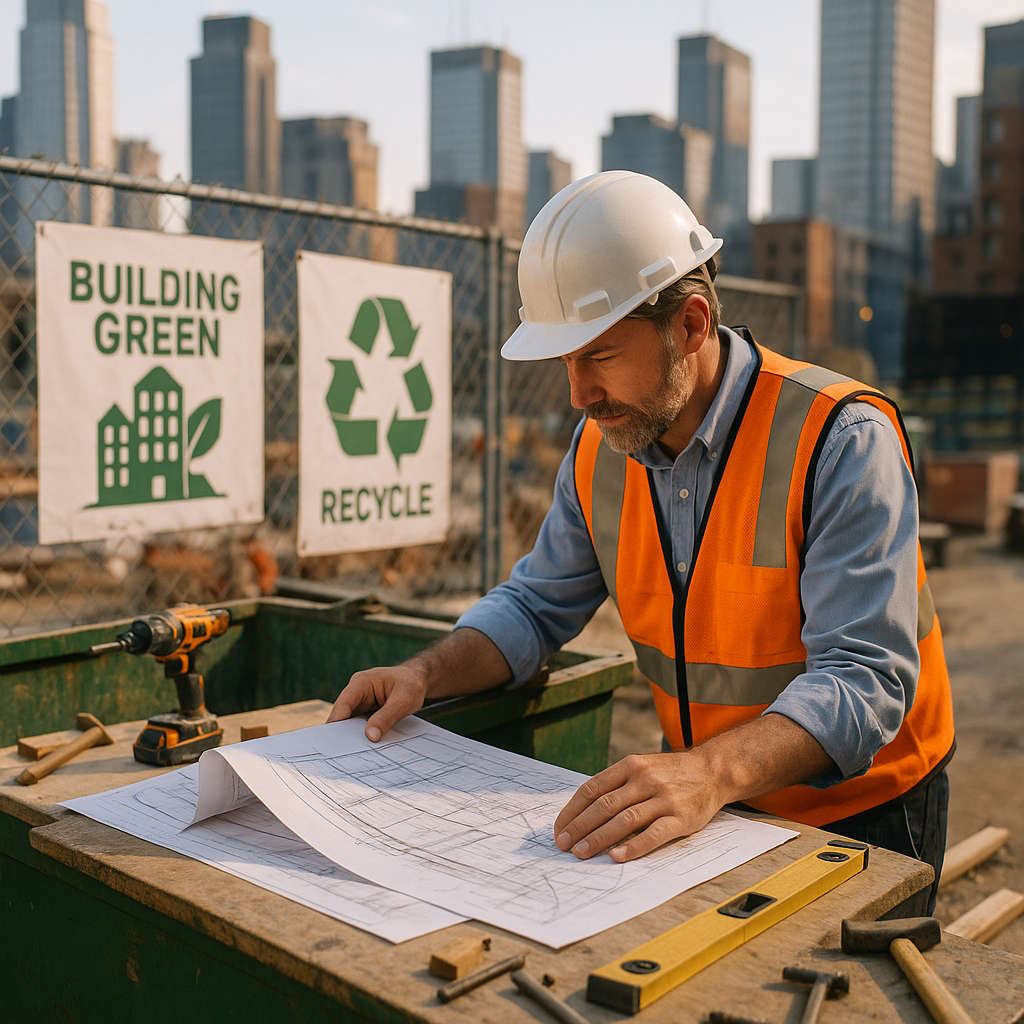5901 Botham Jean Blvd, Dallas, TX 75215
What Are LEED Points For Construction Waste Management?
July 21, 2025LEED (Leadership in Energy and Environmental Design) is a globally recognized green building certification program developed by the U.S. Green Building Council. The system awards points across various categories to evaluate a building project’s environmental friendliness. Construction waste management provides a significant opportunity to earn LEED points by implementing sustainable practices on job sites.
The central focus of LEED construction waste management is diverting debris from landfills. Projects earn points by recycling, reusing, or salvaging construction and demolition materials that would otherwise be discarded. This method not only reduces environmental impact but often results in cost savings through decreased disposal fees and potential revenue from recyclable materials.
The LEED framework awards specific points based on the percentage of waste diverted and the number of material streams recycled. For example, under LEED v4.1, projects can earn points by diverting at least 50% of construction waste from landfills. Additional points are available for achieving higher diversion rates or implementing waste prevention strategies that minimize total waste generated per square foot of the building.
How many LEED points can be earned for construction waste management?

Under LEED v4, projects can earn up to two points for construction waste management. Credits are awarded to projects that divert construction and demolition waste from landfills and incineration facilities through recycling and resource recovery.
Projects can earn points through two pathways:
- 1 point is awarded for diverting at least 50% of construction and demolition materials from landfills and incineration facilities, including at least three different material streams.
- 2 points are awarded for diverting at least 75% of construction and demolition materials. At this level, materials must include at least four different streams.
A material stream refers to categories of materials sent to different facilities or used for different purposes. For example, concrete sent to a recycling facility counts as one stream, while metals sent to a scrap yard counts as another.
Projects must develop and implement a construction waste management plan that identifies strategies to reduce waste generation during design and construction phases. The plan should establish waste diversion goals by identifying targeted materials and describing their intended destinations.
Calculations can be done by weight or volume but must remain consistent. Land-clearing debris and excavated soil are excluded, while materials sent for alternative daily cover are considered waste, not diversion.
For projects struggling to meet percentage-based thresholds, LEED v4 offers an alternative compliance path. Projects can earn two points by generating less than 2.5 pounds of construction waste per square foot of the building’s floor area.
What materials qualify for LEED construction waste management credits?

LEED construction waste management credits focus on diverting nonhazardous construction and demolition debris from landfills. Several common materials qualify for these credits when properly recycled or salvaged during a project.
Qualifying materials include:
- Cardboard and paper packaging
- Metal (including aluminum, steel, and copper)
- Brick and masonry products
- Concrete
- Plastics (various types)
- Clean wood
- Glass
- Gypsum wallboard
- Carpet and carpet tiles
- Acoustic ceiling tiles
- Insulation
- Asphalt and asphalt shingles
These materials often make up significant portions of construction waste. For example, concrete may account for around 40% of construction waste, metals about 15%, and wood roughly 10%. Understanding your waste stream composition helps in establishing effective diversion strategies.
Material management options include recycling, on-site reuse, sending to manufacturers for reprocessing, or donating to organizations like Habitat for Humanity. Each diverted material stream contributes to your project’s waste diversion percentage.
Materials That Don’t Qualify
Not all construction-related materials contribute to LEED waste management credits. The following do not count toward diversion calculations:
- Excavated soil
- Land-clearing debris (trees, stumps, rocks)
- Materials designated as hazardous waste
- Materials used as alternative daily cover (ADC) at landfills
While these materials require responsible management, they cannot be included in your LEED diversion metrics.
Calculation Methods
Consistency in calculation methods is crucial when documenting LEED construction waste management credits. Choose one method—either by weight or volume—and apply it consistently throughout your project.
For commingled waste sent to certified recycling facilities, use the facility’s average recycling rate or obtain project-specific diversion rates. Visual inspection alone is not sufficient for determining diversion rates.
When calculating diversion percentages, track:
- Total waste generated (by weight or volume)
- Amount diverted by material stream
- Overall diversion percentage
Proper documentation includes collecting waste haul receipts, maintaining waste management reports, and creating spreadsheets that convert all waste materials to the chosen measurement unit.
Understanding which materials qualify for LEED waste management credits allows project teams to develop comprehensive waste management plans that maximize diversion rates. By focusing on high-volume materials and maintaining consistent calculation methods, construction projects can achieve the 50% or 75% diversion thresholds needed to earn valuable LEED points.
What strategies can be used to maximize LEED points for waste management?
Effective waste management is essential for sustainable construction practices. For project teams aiming for LEED certification, waste management offers an opportunity to earn valuable points and reduce environmental impact. The key to success is strategic planning and execution.
A well-executed construction waste management approach not only diverts materials from landfills but also cuts project costs through efficient resource use and potential salvage value. Here are the most effective strategies for maximizing your LEED points through waste management:
Develop a Comprehensive Waste Management Plan
Successful waste management begins with a thorough plan. This document serves as your guide throughout construction.
- Establish clear diversion goals from the start. LEED v4.1 awards 1 point for 50% waste diversion, while 2 points require 75% diversion and four separate material streams.
- Identify at least five specific waste streams to target. Common categories include concrete, metals, wood, gypsum board, and cardboard.
- Outline specific strategies for each material, including collection, storage, and processing methods.
- Estimate the percentage each material represents of your total waste stream.
- Document waste reduction strategies during the design and construction phases.
Remember, your plan should be a living document. Regular updates based on actual site conditions and waste generation will improve compliance and point achievement.
Implement Effective On-Site Sorting Systems
The success of your waste diversion efforts largely depends on material handling at the construction site.
- Set up clearly labeled containers for each targeted waste stream. Use multiple languages if necessary for your workforce.
- Consider phasing your dumpsters based on construction stages. For example, dedicate concrete dumpsters during foundation work, then switch to commingled recycling during building construction.
- Position containers strategically throughout the site to make sorting convenient for workers.
- Provide training for all site personnel on proper waste sorting protocols.
- Conduct regular inspections of waste containers to prevent contamination.
Proper sorting at the source increases diversion rates and ensures cleaner material streams for recycling facilities.
Establish Strong Recycling Partnerships
Your ability to divert materials depends on having reliable partners who can process them properly.
- Research and vet recycling facilities early in the project planning phase.
- Verify that potential partners can provide the documentation required for LEED, including regulated facility diversion rates.
- Ask specific questions about how materials are processed and where they go after leaving your site.
- Consider facilities certified by the Recycling Certification Institute (RCI) when available.
- Coordinate with haulers to optimize container types and pickup schedules.
Working with experienced recycling partners who understand LEED requirements can significantly streamline the documentation process.
Track and Document Diversion Efforts
Meticulous record-keeping is crucial for LEED certification. Your documentation must demonstrate compliance with diversion goals.
- Implement a system to track all waste removed from the site, including weights or volumes for each material type.
- Maintain consistent measurement units throughout your tracking (either weight or volume).
- Collect and organize facility receipts, weight tickets, and hauler reports.
- Calculate running diversion rates throughout the project to monitor progress.
- Document any alternative daily cover (ADC) separately, as this counts as waste, not diversion.
- Exclude excavated soil and land-clearing debris from calculations.
Regular monitoring allows you to address any shortfalls in diversion rates before project completion.
Prioritize Material Salvage and Reuse
The highest form of waste diversion is direct reuse, preserving both embodied energy and material value.
- Conduct a pre-construction survey to identify materials suitable for salvage.
- Implement careful deconstruction rather than demolition where feasible.
- Establish protocols for storing and protecting salvaged materials.
- Connect with architectural salvage companies or materials exchanges for items that cannot be reused on-site.
- Consider designing spaces to incorporate salvaged materials.
Salvaged materials can count as separate material streams, helping you achieve higher LEED point thresholds.
Minimize Waste Generation
The most effective waste management strategy is preventing waste creation in the first place.
- Work with designers to optimize material use through standardized dimensions.
- Implement just-in-time delivery to reduce damage from improper storage.
- Order materials in appropriate quantities to minimize excess.
- Negotiate take-back agreements with suppliers for unused materials.
- Use prefabricated components to reduce on-site waste generation.
Under LEED v4.1, projects generating less than 15 pounds of waste per square foot can earn an additional point, regardless of diversion rate.
By implementing these comprehensive strategies, project teams can maximize their LEED points while contributing to more sustainable construction practices. The key is early planning, consistent implementation, and thorough documentation throughout the construction process.
Effective Construction Waste Management for LEED Certification

Managing construction waste effectively for LEED certification requires a strategic approach from project start to finish. This begins with a comprehensive waste management plan that identifies potential waste streams, sets diversion targets, and establishes tracking and documentation methods. Projects should aim to divert at least five material streams such as concrete, metals, wood, masonry, and gypsum board, while employing waste reduction strategies like careful ordering, prefabrication, and reuse. Thorough documentation is key, with accurate weight calculations and verification from certified recycling facilities ensuring compliance with LEED requirements.
Beyond earning LEED points, effective construction waste management contributes to resource conservation, reduces environmental impact, and can lead to cost savings through lower disposal fees. For expert guidance on implementing LEED-compliant waste management strategies for your construction project, contact Okon Recycling at 214-717-4083.
